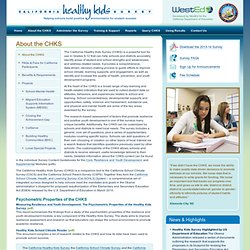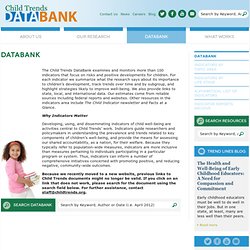

Child Welfare Outcomes 2008–2011: Report to Congress. Telefónica Global Millennial Survey. Infographic of the Day: How Segregated is Your City? Recently, cartographer Bill Rankin produced an astounding map of Chicago, which managed to show the city's areas of racial integration.

Eric Fischer saw those maps, and took it upon himself to create similar ones for the top 40 cities in the United States. Fisher used a straight forward method borrowed from Rankin: Using U.S. Census data from 2000, he created a map where one dot equals 25 people. The dots are then color-coded based on race: White is pink; Black is blue; Hispanic is orange, and Asian is green. The results for various cities are fascinating: Just like every city is different, every city is integrated (or segregated) in different ways. Washington, D.C., for example, has a stark east/west divide between white and black: Detroit, meanwhile, is marked by the infamous Eight Mile beltway, which serves a precise boundary for the city's black and white populations.
However, other cities present better pictures of racial integration. L.A., meanwhile, is sort of the opposite. TIMSS and PIRLS Home. CDC WONDER. Www.childrensdefense.org/child-research-data-publications/data/state-data-repository/cits/2013/2013-notes-sources-children-in-the-states.pdf. Children in the States Factsheets 2013. Radical test prep. April is test-prep month (apparently).

So, what better use of my blog than to provide harried readers with some test-prep tips? But beware: the tips I am going to provide are very different than the thoughtless and passive-aggressive ones you get from most people offering such tips. “I’d love to teach for understanding, but there’s so much to ‘cover’ for the test.” Huh? You have to teach badly to raise test scores??? Do I like our over-emphasis on tests?
Isn’t it time you worked with colleagues to call into questions these knee-jerk and intellectually bankrupt approaches to dealing with tests? UPDATE: I have uploaded a narrated Powerpoint fleshing out some of these ideas, for use with colleagues. Like this: Like Loading... Charts and Graphs. U.S. K-12 Free- and Reduced-Lunch Eligible Student Statistics. Home - KIDS COUNT Data Center. Export - Volunteering and Civic Life in America. GENDER EQUALITY Explorer. Gender Equality Explorer provides free, 24/7, user-friendly access to data disaggregated by gender from the U.S.

Census Bureau collected through the American Community Survey. The tool enables you to create your own tables, maps and reports to illustrate, analyze and understand the status of women and girls in your community. Gender Equality Explorer was created by the Women’s Foundation of Minnesota and the University of Minnesota’s Center on Women and Public Policy to expand the availability of data on women and girls and the capacity of individuals and organizations to use data to advance equality for women and girls across the country.
The Nation's Report Card - National Assessment of Educational Progress - NAEP. About the CHKS. The California Healthy Kids Survey (CHKS) is a powerful tool for use in Grades 5-12 that can help schools and districts accurately identify areas of student and school strengths and weaknesses, and address related needs.

It provides a comprehensive, data-driven, decision-making process to guide efforts to improve school climate, learning supports, and engagement, as well as identify and increase the quality of health, prevention, and youth development programs. At the heart of the CHKS is a broad range of key learning and health-related indicators that are used to collect student data on attitudes, behaviors, and experiences related to school and learning. School connectedness, developmental supports and opportunities, safety, violence and harassment, substance use, and physical and mental health are some of the key areas assessed by the survey. The research-based assessment of factors that promote resilience and positive youth development is one of the surveys many unique benefits.
Welcome to the Child Trends DataBank. The Child Trends DataBank examines and monitors more than 100 indicators that focus on risks and positive developments for children.

For each indicator we summarize what the research says about its importance to children’s development, track trends over time and by subgroup, and highlight strategies likely to improve well-being. We also provide links to state, local, and international data. Our estimates come from reliable sources including federal reports and websites. Other resources in the indicators area include The Child Indicator newsletter and Facts at a Glance.